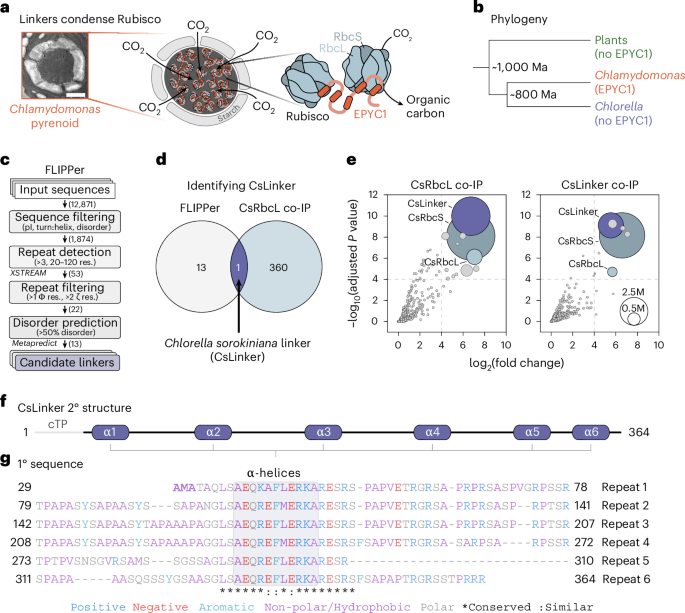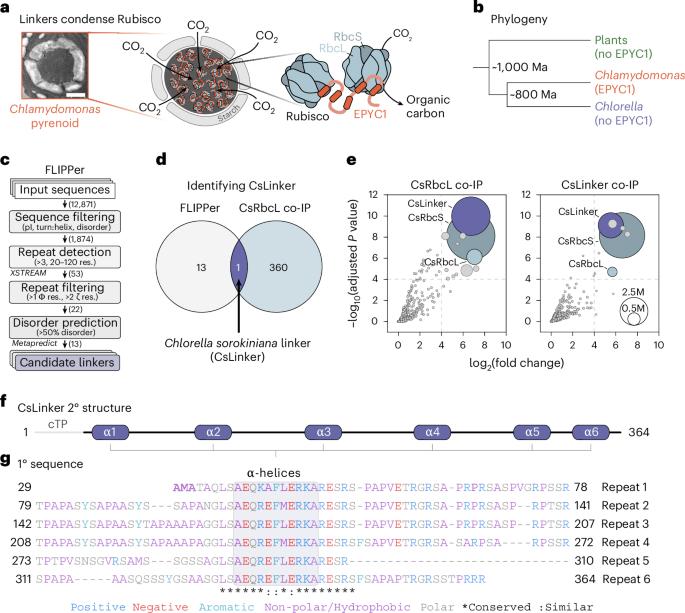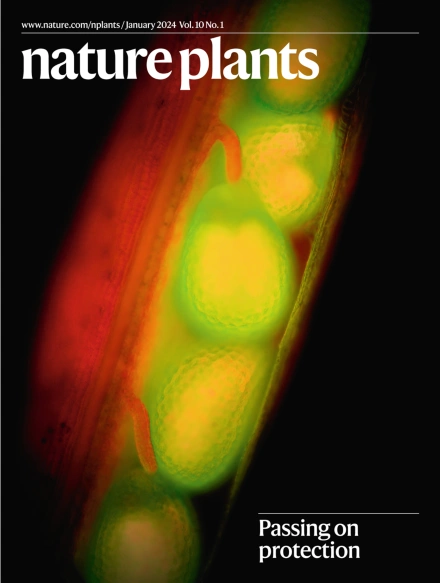绿系真核生物碳固定相分离的杂交机制
IF 15.8
1区 生物学
Q1 PLANT SCIENCES
引用次数: 0
摘要
二氧化碳的固定通常受到二氧化碳固定酶 Rubisco 效率低下的限制。真核藻类将二氧化碳浓缩并固定在称为焦磷酸的相分离凝结物中,完成了全球三分之一的二氧化碳固定。Rubisco在焦磷酸中的凝结依赖于与无序连接蛋白的相互作用,而无序连接蛋白在物种间几乎没有保存。我们开发了一个独立于序列的生物信息学管道来识别绿藻中的连接蛋白。我们报告了小球藻的连接蛋白,并证明它与 Rubisco 大亚基上的一个保守位点结合。我们的研究表明,小球藻的连接蛋白相分离了衣藻的 Rubisco,尽管二者在进化过程中相隔了约 8 亿年,但小球藻的连接蛋白仍能支持衣藻中功能性焦磷酸的形成。这种跨物种反应性延伸到了植物,小球藻连接体能够在体外和植物体内驱动一些本地植物 Rubiscos 的缩合。我们的研究结果代表了植物中类肾上腺素工程的一个令人兴奋的前沿领域,其模型可提高作物产量。本文章由计算机程序翻译,如有差异,请以英文原文为准。


A promiscuous mechanism to phase separate eukaryotic carbon fixation in the green lineage
CO2 fixation is commonly limited by inefficiency of the CO2-fixing enzyme Rubisco. Eukaryotic algae concentrate and fix CO2 in phase-separated condensates called pyrenoids, which complete up to one-third of global CO2 fixation. Condensation of Rubisco in pyrenoids is dependent on interaction with disordered linker proteins that show little conservation between species. We developed a sequence-independent bioinformatic pipeline to identify linker proteins in green algae. We report the linker from Chlorella and demonstrate that it binds a conserved site on the Rubisco large subunit. We show that the Chlorella linker phase separates Chlamydomonas Rubisco and that despite their separation by ~800 million years of evolution, the Chlorella linker can support the formation of a functional pyrenoid in Chlamydomonas. This cross-species reactivity extends to plants, with the Chlorella linker able to drive condensation of some native plant Rubiscos in vitro and in planta. Our results represent an exciting frontier for pyrenoid engineering in plants, which is modelled to increase crop yields. Barrett et al. identify a key Rubisco phase-separating protein in the CO2-fixing pyrenoid of Chlorella algae. This protein’s broad promiscuity for green lineage Rubiscos may aid in engineering CO2-supercharging pyrenoids in plants to boost yields.
求助全文
通过发布文献求助,成功后即可免费获取论文全文。
去求助
来源期刊

Nature Plants
PLANT SCIENCES-
CiteScore
25.30
自引率
2.20%
发文量
196
期刊介绍:
Nature Plants is an online-only, monthly journal publishing the best research on plants — from their evolution, development, metabolism and environmental interactions to their societal significance.
 求助内容:
求助内容: 应助结果提醒方式:
应助结果提醒方式:


